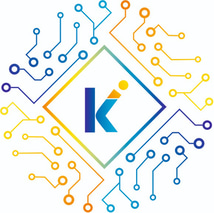Interconnects are a crucial component of modern electronic systems, enabling the transfer of signals and power between different parts of a circuit or system. As the complexity and density of electronic systems continue to increase, the role of interconnects becomes even more critical. In this context, understanding the principles and technologies underlying interconnects is essential for designing and developing high-performance electronic systems.
At the most basic level, interconnects can be thought of as conductive pathways that allow signals to flow between different components or subsystems. These pathways can take many forms, including wires, cables, printed circuit board (PCB) traces, and even optical fibers. Regardless of their physical form, however, interconnects must be designed to minimize signal degradation and distortion, while also providing reliable and efficient transmission of power and signals.
One of the key challenges in designing interconnects is managing the various forms of signal degradation that can occur during transmission. These include attenuation, which refers to the loss of signal amplitude over distance, as well as distortion, which can take many forms, including amplitude distortion, phase distortion, and harmonic distortion. To mitigate these effects, interconnect designers must carefully consider factors such as conductor material, geometry, and spacing, as well as the dielectric properties of the surrounding medium.
In addition to signal degradation, interconnect designers must also contend with the challenges of power transmission. As electronic systems become increasingly power-hungry, the demands on interconnects to deliver high levels of power while minimizing energy loss and heat generation become more pressing. This requires careful consideration of factors such as conductor size and material, as well as the use of advanced technologies such as high-temperature superconductors and advanced thermal management materials.
The design and development of interconnects also requires a deep understanding of the underlying electromagnetic principles. This includes the behavior of electromagnetic waves in different media, as well as the interactions between electromagnetic fields and conductive structures. By applying this knowledge, interconnect designers can create optimized interconnect geometries and materials that minimize signal degradation and power loss while maximizing overall system performance.
In recent years, the development of new interconnect technologies has been driven by the need for higher speeds, lower power consumption, and increased density. One example is the use of optical interconnects, which rely on light rather than electricity to transmit signals. Optical interconnects offer a number of advantages, including higher bandwidth, lower power consumption, and reduced electromagnetic interference. However, they also present a number of challenges, including the need for high-speed optical transceivers and the management of optical signal degradation.
Another area of active research is the development of new materials and structures for interconnects. This includes the use of graphene, nanotubes, and other advanced materials that offer improved electrical conductivity, thermal management, and mechanical strength. It also includes the development of new interconnect geometries, such as 3D stacked interconnects and optical waveguides. By leveraging these advances, researchers aim to create interconnects that are faster, smaller, and more efficient than ever before.
In conclusion, interconnects are a critical component of modern electronic systems, and their design and development require a deep understanding of electromagnetic principles, signal degradation, and power transmission. As electronic systems continue to evolve and become increasingly complex, the role of interconnects will only become more critical. By advancing our understanding of interconnect technologies and developing new materials and structures, researchers aim to create faster, smaller, and more efficient electronic systems that will enable a wide range of new applications and capabilities.
